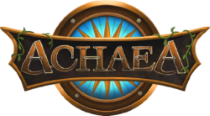9.37.2 Crafting Punctuation
What follows is a simplified set of punctuation rules as they pertain to
crafting descriptions.
COMMAS
------
If you have multiple adjectives in front of your noun, they usually need to be
separated with a comma. A simple way to figure out if a comma is needed is to
see if the word AND will fit between the adjectives.
a long blue nightgown (incorrect)
a long and blue nightgown (correct)
a long, blue nightgown (correct)
Not everything can be broken up with the word AND. In cases such as this, you
do not use a comma.
a long hunting cloak (correct)
a long and hunting cloak (incorrect)
a long, hunting cloak (incorrect)
This method will not make it correct every time, but more often than not it
will come in handy.
NOTE: Information on commas is provided only in the interests of posterity. Commas are NOT permitted in design appearances at all.
THE OXFORD COMMA
----------------
Achaea uses the "Oxford comma" when using lists. This means that when writing a list, a comma should be used before the "and".
a red, white and blue scarf (incorrect)
a red, white, and blue scarf (correct)
HYPHENS
-------
Some adjectives do not describe the noun. Instead, they describe other
adjectives. When this happens, they should be hyphenated.
a red hued cloak (incorrect)
a red, hued cloak (incorrect)
a red-hued cloak (correct)
When there is more than one word like this, you need to include all of them in
the hyphenation.
a red and orange hued cloak (incorrect)
a red and orange-hued cloak (incorrect)
a red- and orange-hued cloak (correct but looks terrible)
a red-and-orange-hued cloak (correct)
When adjectives such as these come after the noun, the hyphen is not used.
a cloak with a red hue (correct)
a cloak with a red-hue (incorrect)
This hyphen still applies if the adjectives come after the noun only to precede
another related noun.
a cloak of red hued silk (incorrect)
a cloak of red-hued silk (correct)
EMDASHES
--------
These are used when you want to add something that expands upon what you have
already written, and are especially important after the sentence should have
been closed.
The flavour of the secret ingredient - garlic - lingers in your mouth.
(correct)
The flavour of the secret ingredient, garlic, lingers in your mouth. (correct)
Long after you swallow the food, you can still taste the secret ingredient -
garlic. (correct)
Long after you swallow the food, you can still taste the secret ingredient,
garlic. (incorrect)
SEMICOLONS
----------
Semicolons are used to join two complete sentences that are related to each
other. The sentences must both be complete and must both touch on the same
immediate subject. The second complete sentence is not capitalised.
The ring has different types of gems. Sapphire chips surround small emeralds.
(correct)
The ring has different types of gems; sapphire chips surround small emeralds.
(correct)
The ring has different types of gems; Sapphire chips surround small emeralds.
(incorrect)
The ring has different types of gems, sapphire chips surround small emeralds.
(incorrect)
The ring has different types of gems; sapphire chips around small emeralds.
(incorrect)
The ring has different types of gems - sapphire chips around small emeralds.
(correct)
IN PRACTICE
-----------
Here is what can happen when you use hyphens and commas correctly.
a flimsy, green-and-blue-coloured, low-cut, silk shirt
That looks terrible, but it is not the fault of the person reading it or the
fault of the rules of punctuation. If you want to avoid such tragedy, choose
carefully when selecting adjectives for the appearance description. If the
world as you know it will come to an end because you are unable to prune your
adjectives, you will have to suffer the punctuation.
